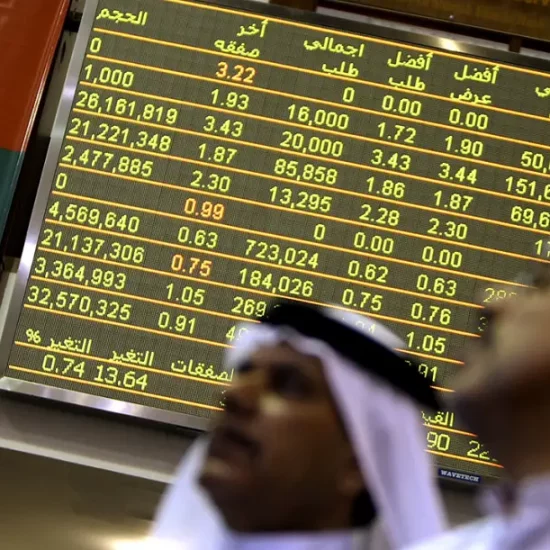Banks in the UAE will benefit from the planned increase in interest rates by the U.S. Federal Reserve, which the Central Bank of the UAE (CBUAE) will likely mirror because the UAE dirham is pegged to the U.S dollar, S&P said in a report.
S&P Global economists expect the Fed to raise rates six times this year starting in March, and five more times in total in 2023 and 2024. These changes will be earnings-accretive for UAE banks because of the structure of their balance sheets.
This is, however, predicated on the assumption that the shift in the yield curve is parallel, and that banks’ balance sheets remain static. Second-round effects of the increase in interest rates could come from a higher cost of risk and cost of funding.
A higher loan charge could push some mortgage- or personal-loan clients to the edge of default, while at the same time pressuring small and midsize enterprises (SMEs) that are still healing from the impact of the COVID-19 pandemic. However, stress tests applied by banks to mortgages at inception in relation to an increase in rates, the granularity of the exposure, and salary assignments for retail lending will act as mitigants.
For corporate exposures, S&P expects banks to adopt a pragmatic approach and would not reflect the full extent of the increase in rates whenever this could push their clients to non-performance. Overall, the banking sector’s Stage 3 loans asre projected to reach 7.0% of systemwide loans by the end of 2022 compared with 6.1% at year-end 2021.
S&P also expects cost of risk to increase slightly in 2022 to around 120-130 basis points (bps) compared with 116 bps in 2021 as support measures are lifted and companies in still vulnerable sectors are reclassified. Cost of funding will inevitably rise as some deposits migrate from no- or low-interest to interest-bearing products.
However, with around two-thirds of total deposits bearing no or limited interest, UAE banks’ funding will remain a strength, it says. The net external asset position is also likely to shelter UAE banks against lower and more expensive global liquidity.
As of Dec. 31, 2021, data from the top 10 banks in the UAE show that banks are likely to have an increase of 15% of their net income or an additional 1.4 percentage points of return on equity for every 100-bps increase in rates. While these numbers are on the stylized assumption that banks’ balance sheets remain static and the shift in the yield curve is parallel, it is a broad indicator of the direction and magnitude of the impact of rising rates.
Also published on Medium.






